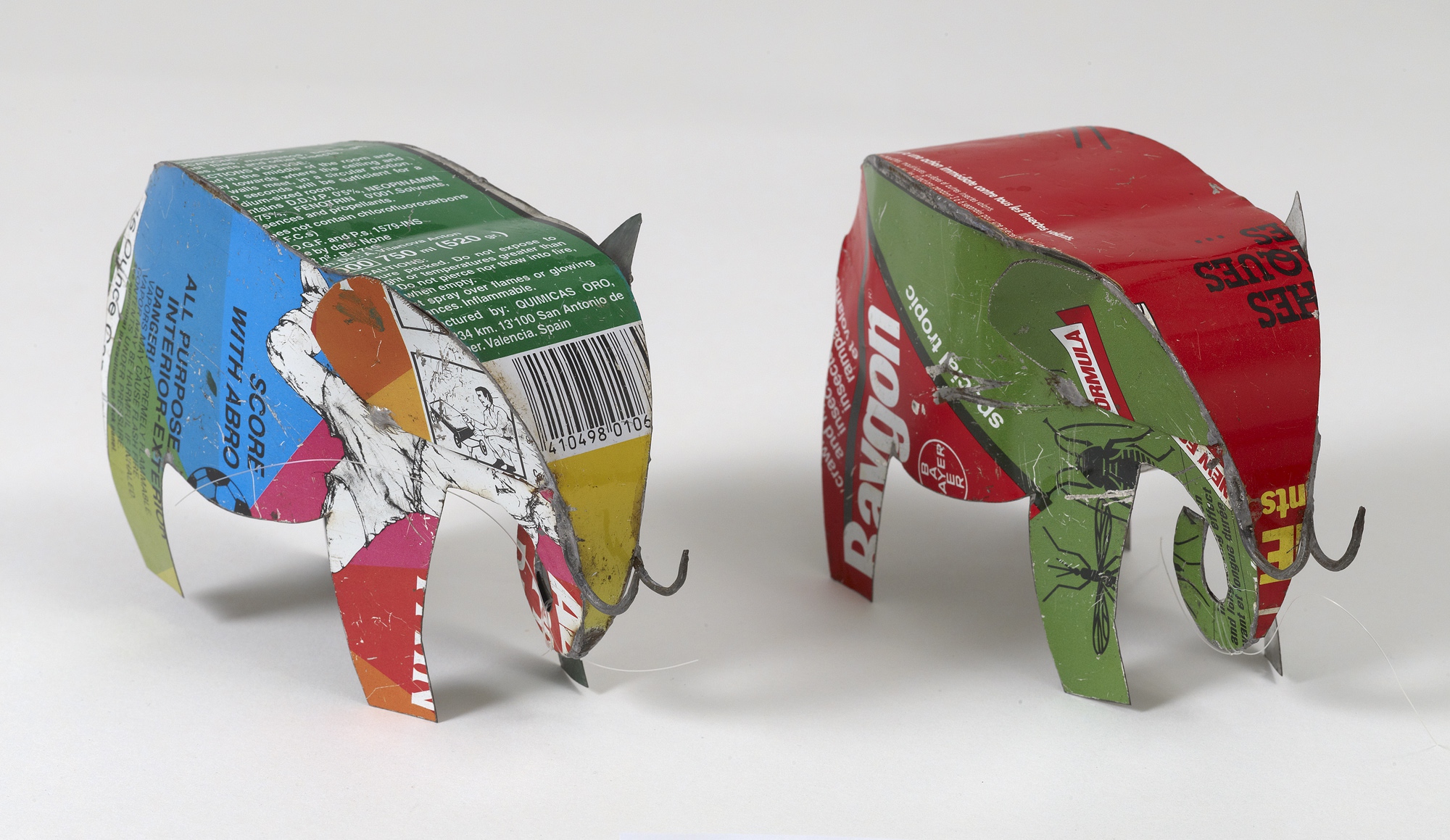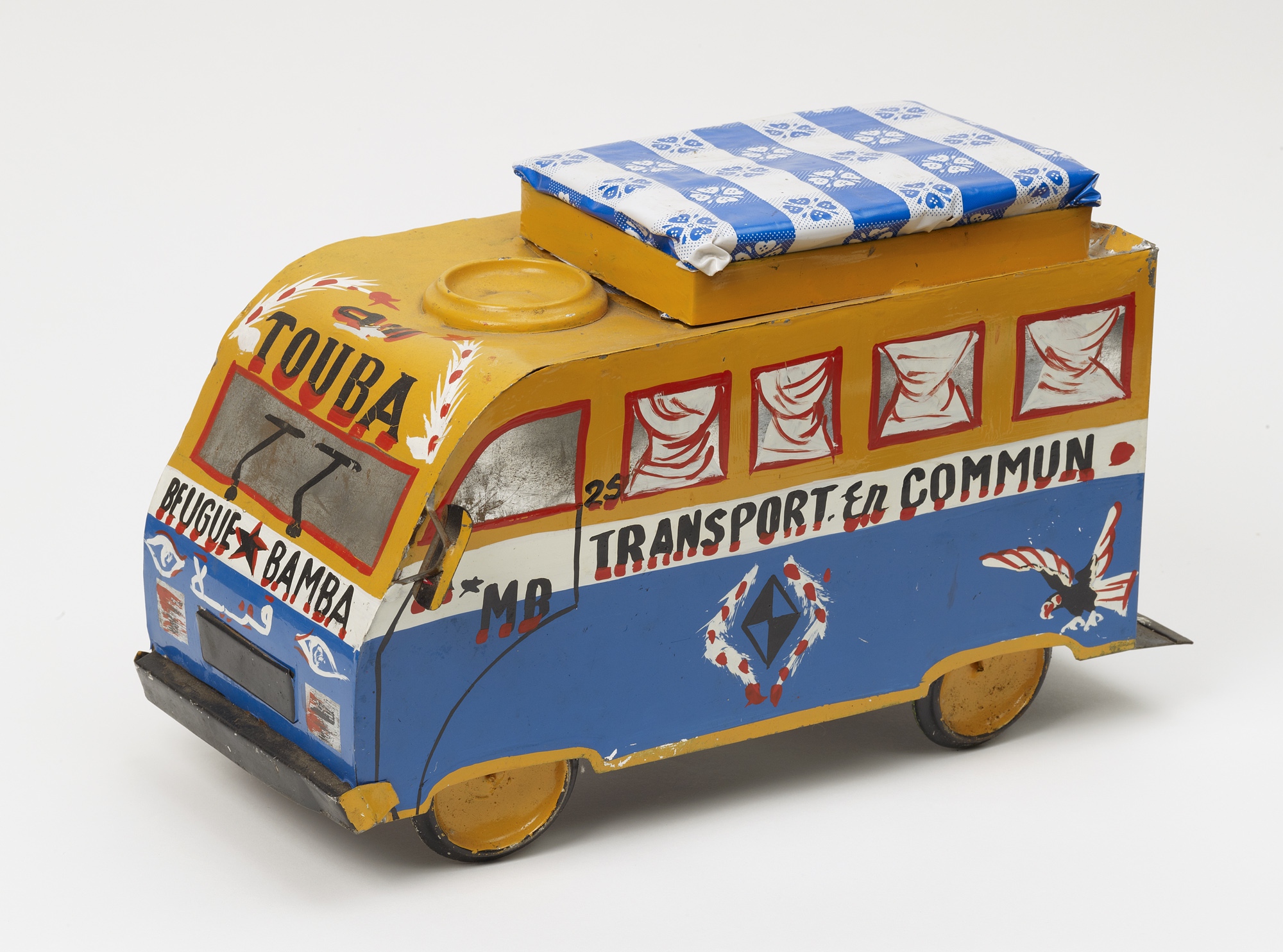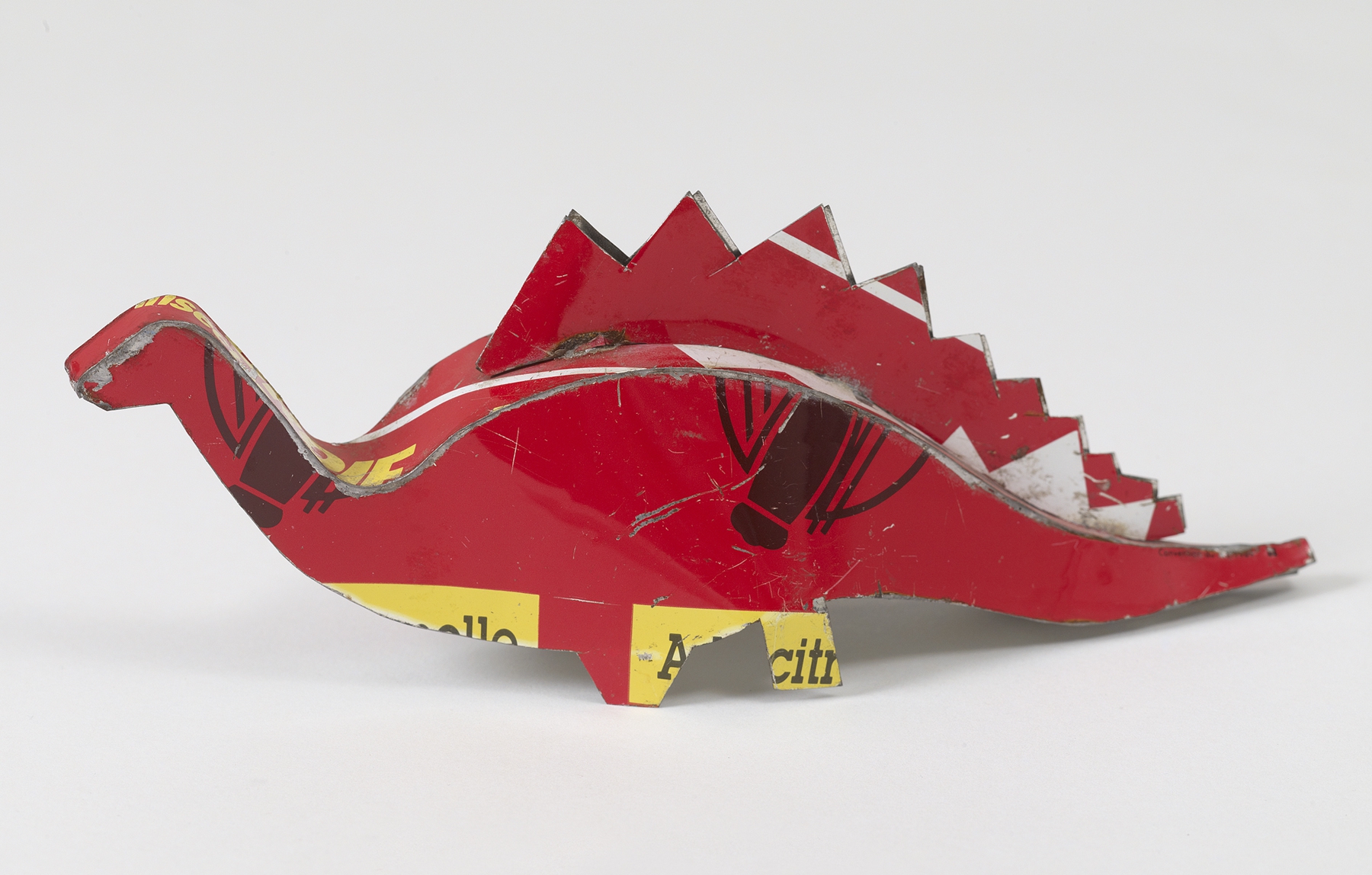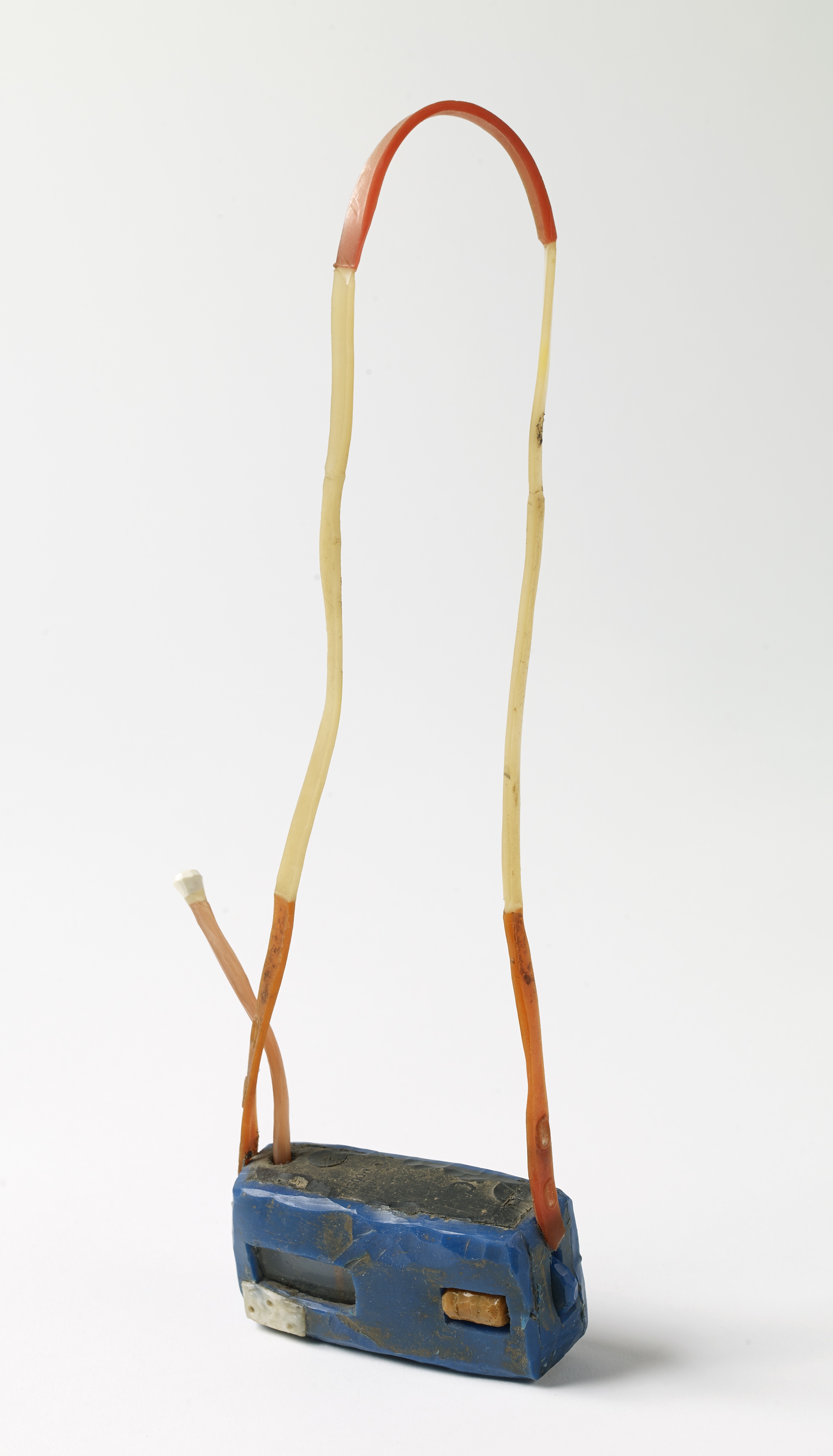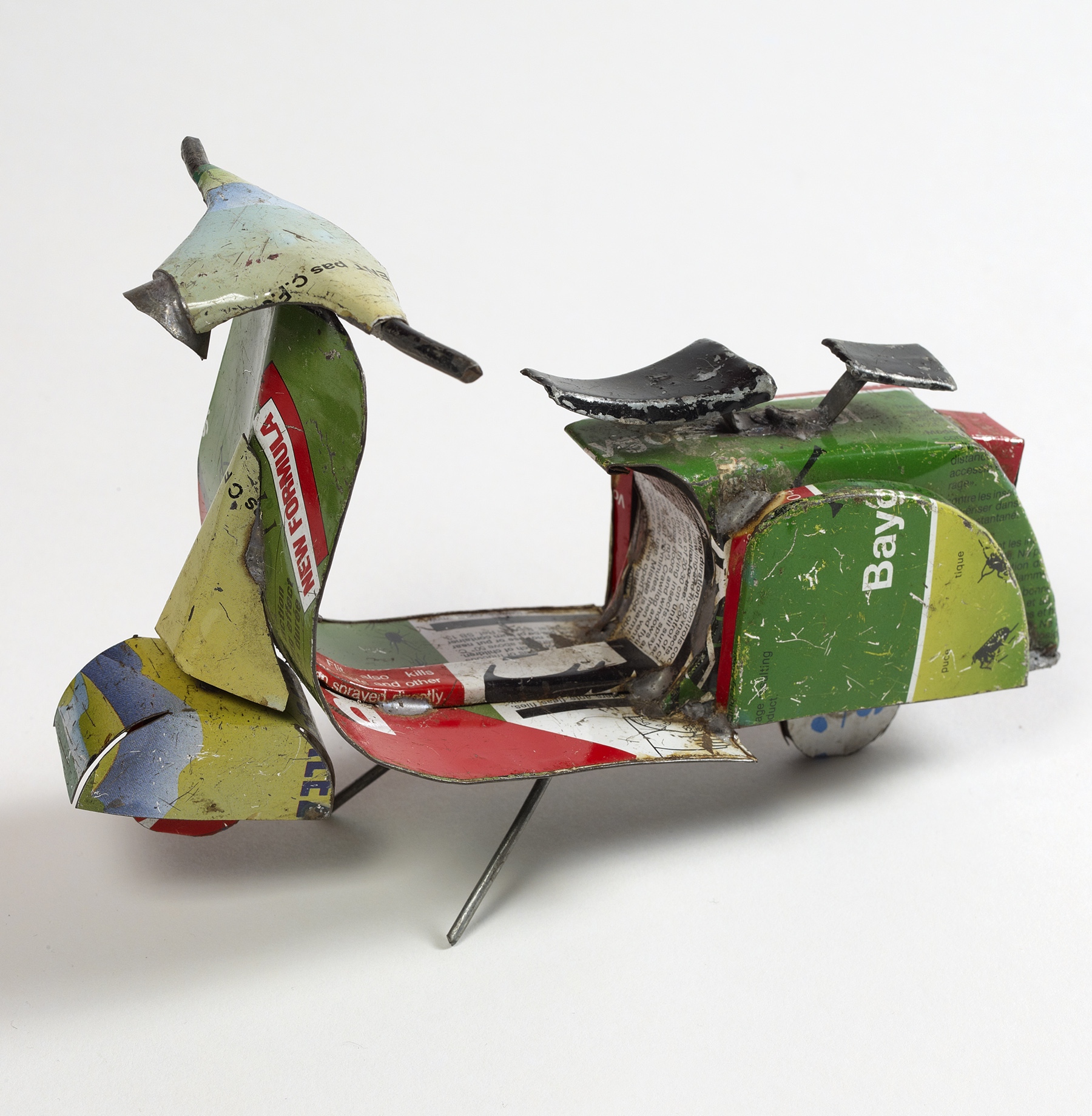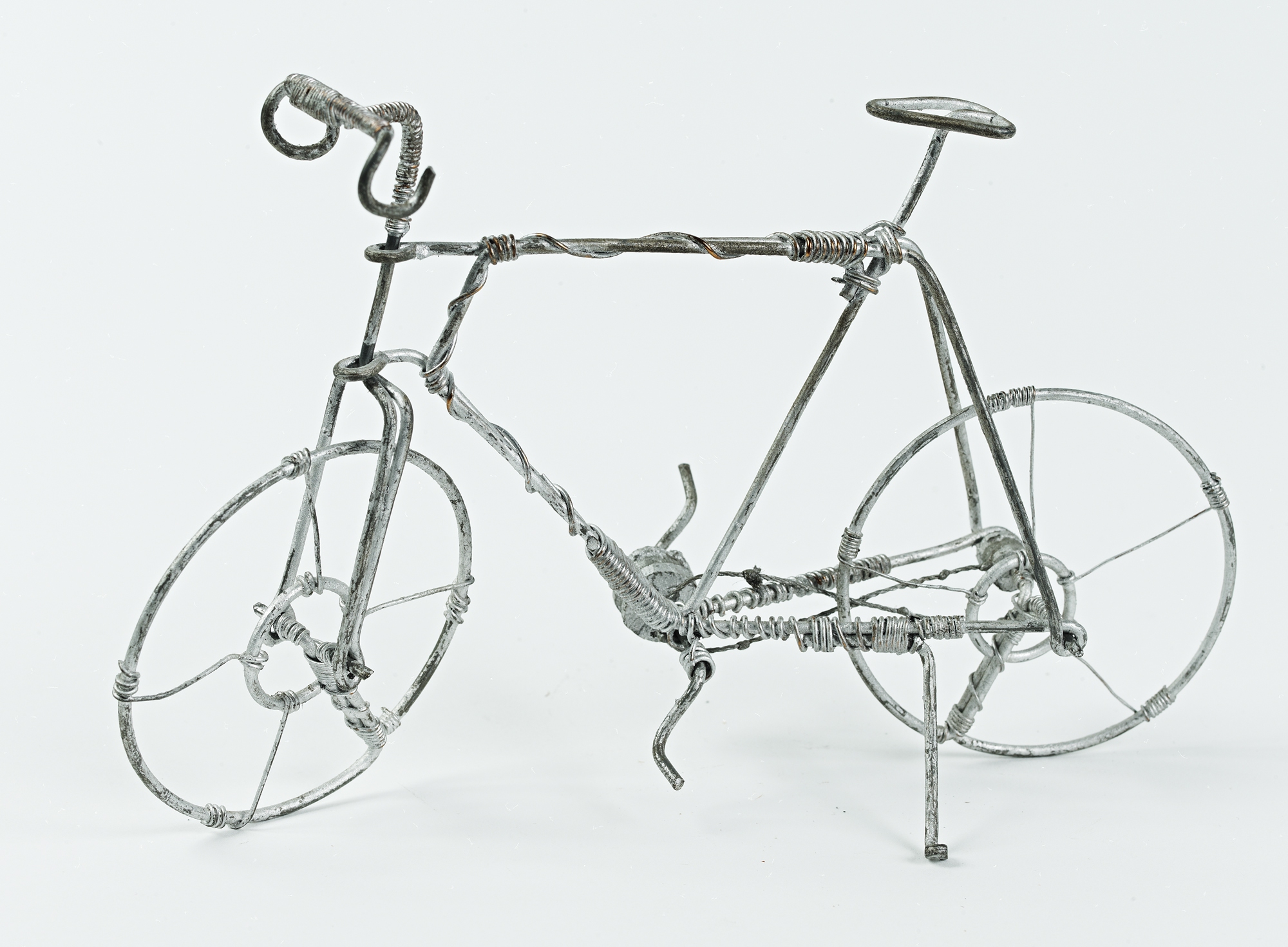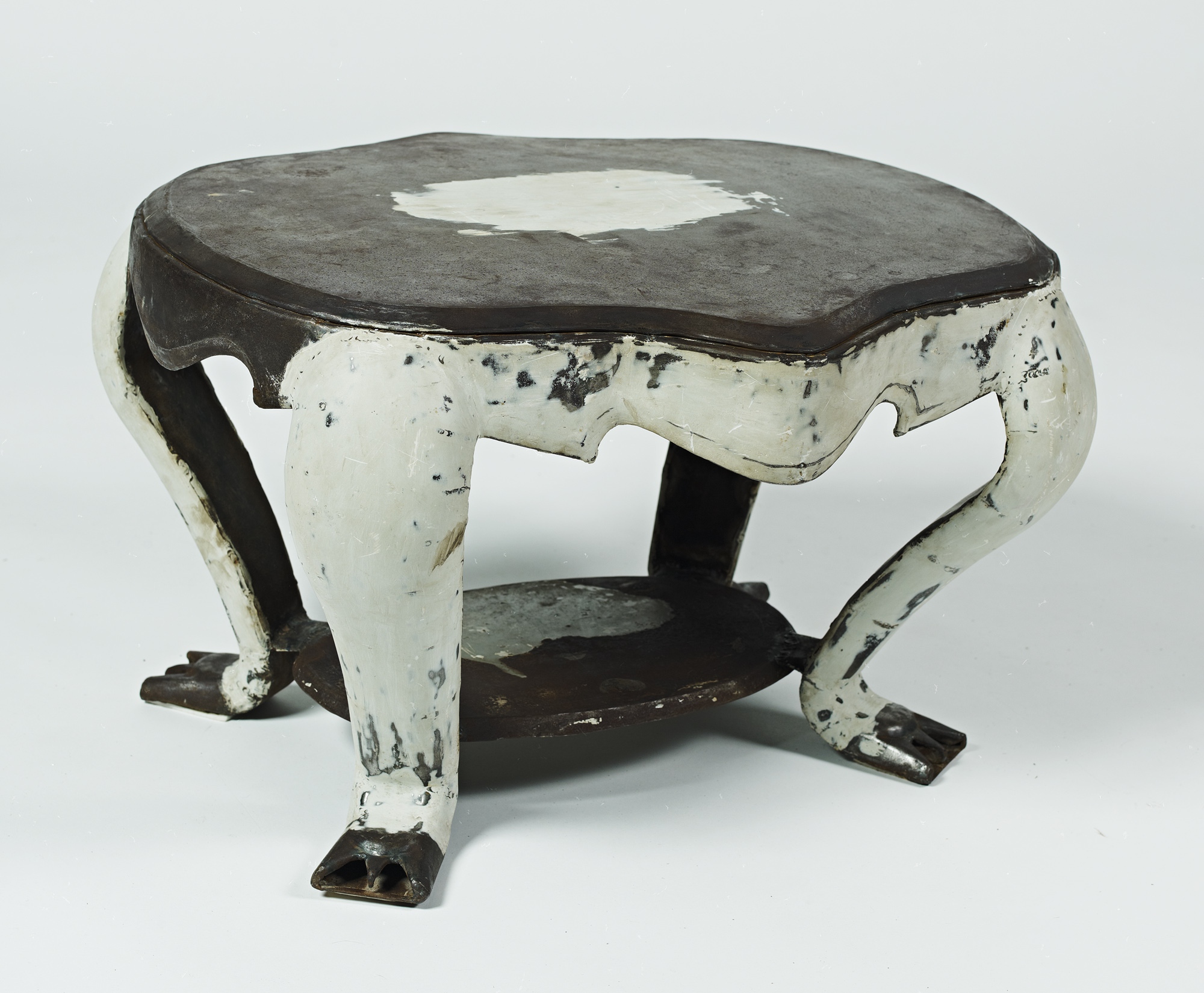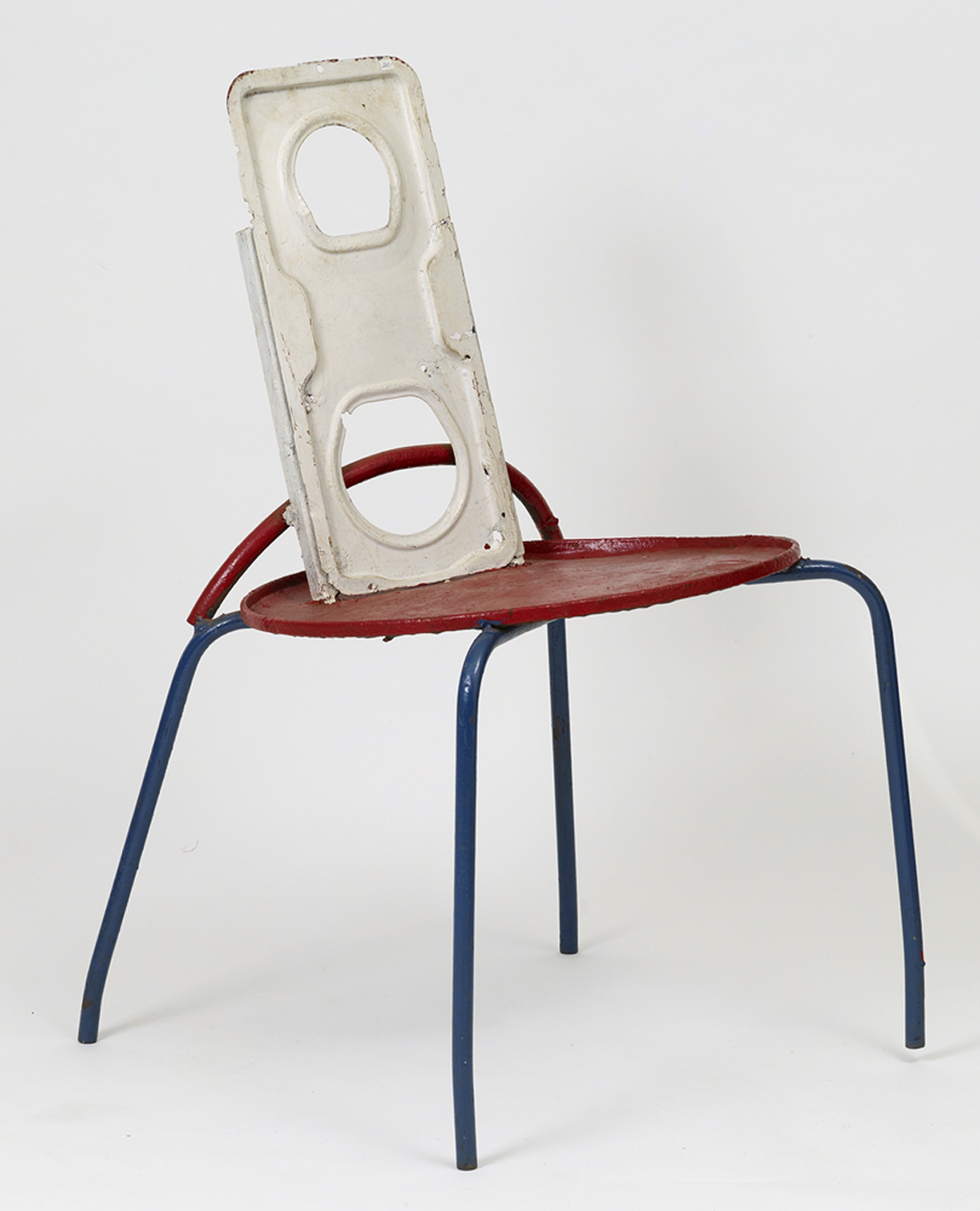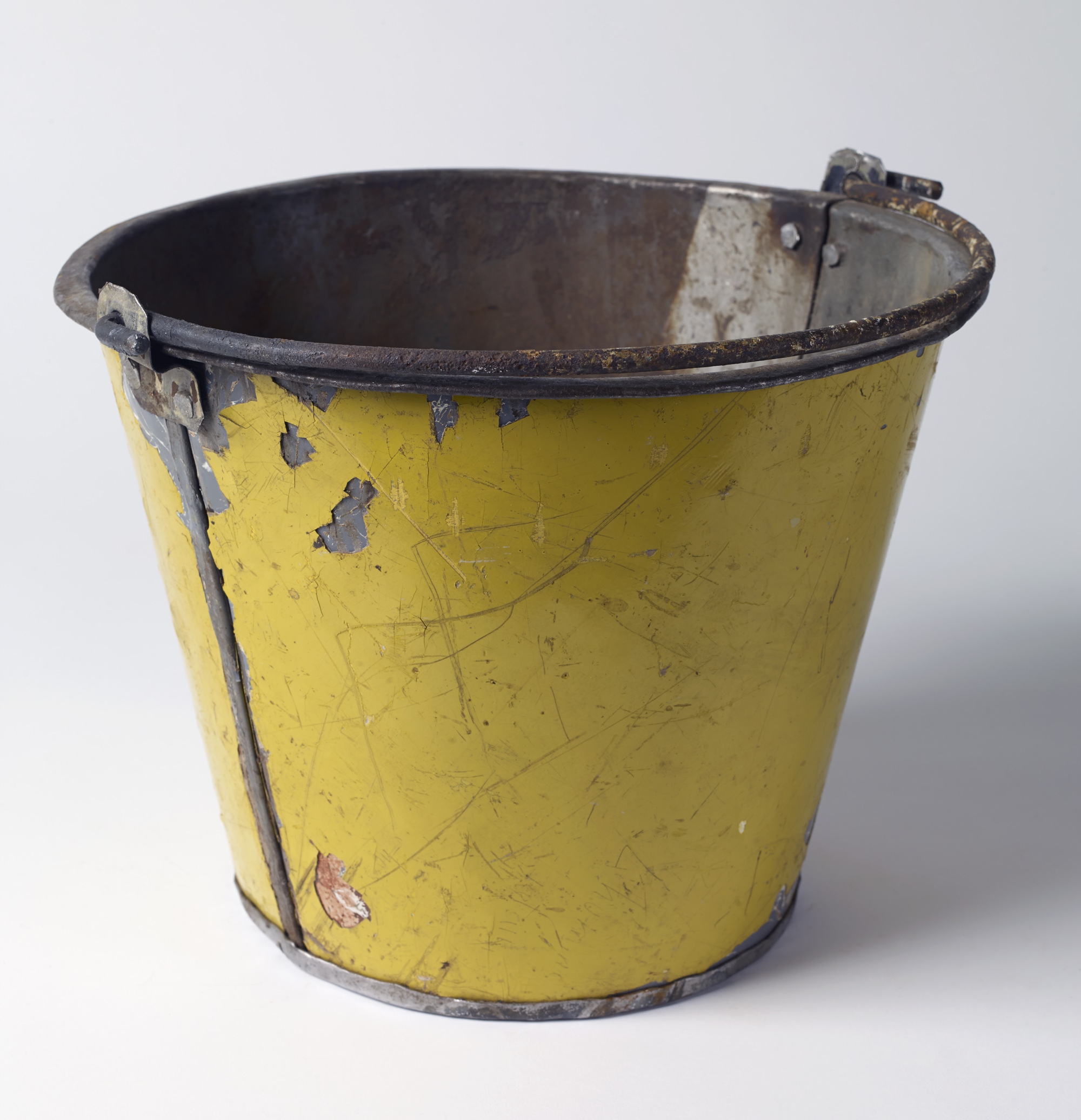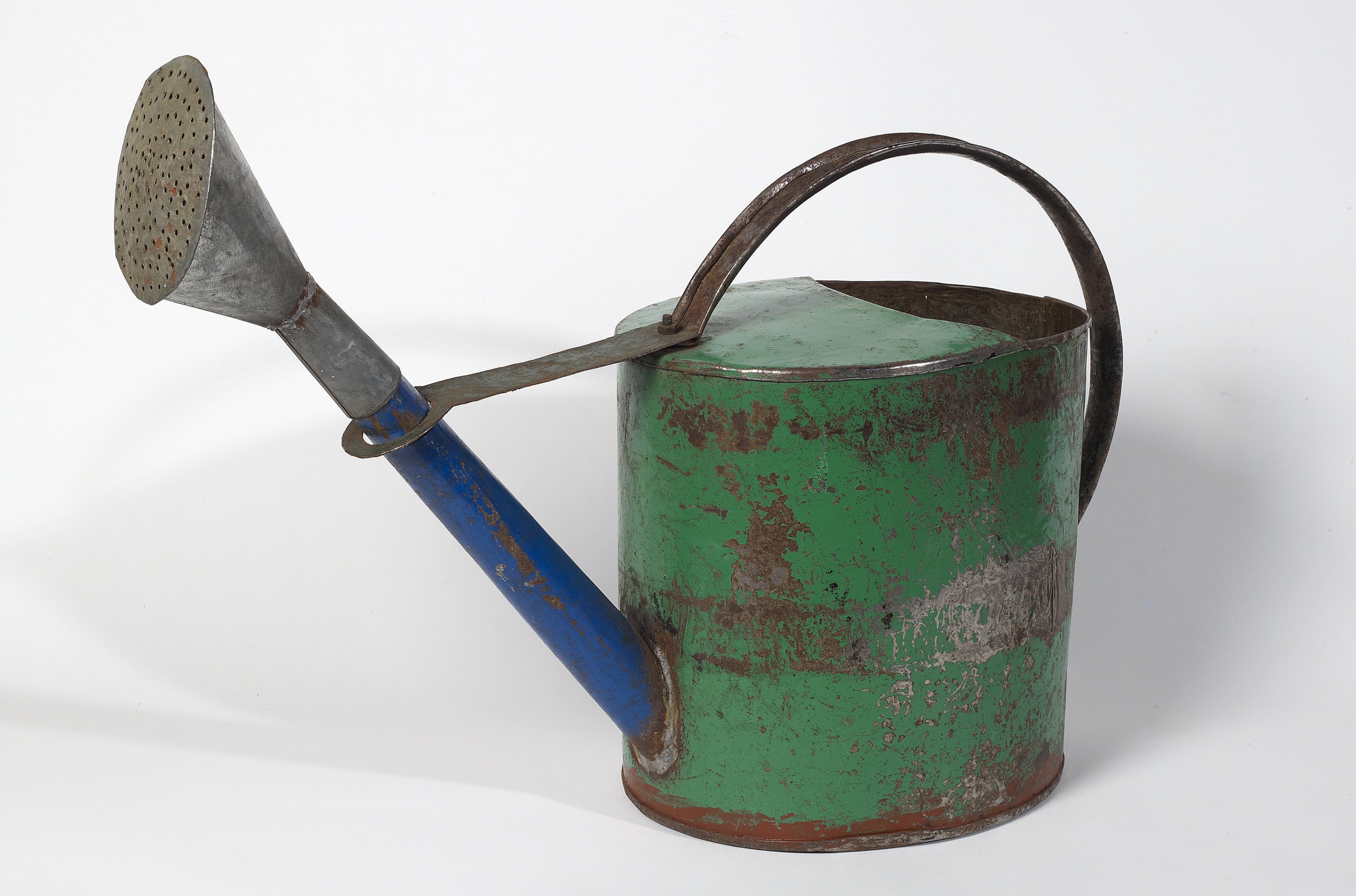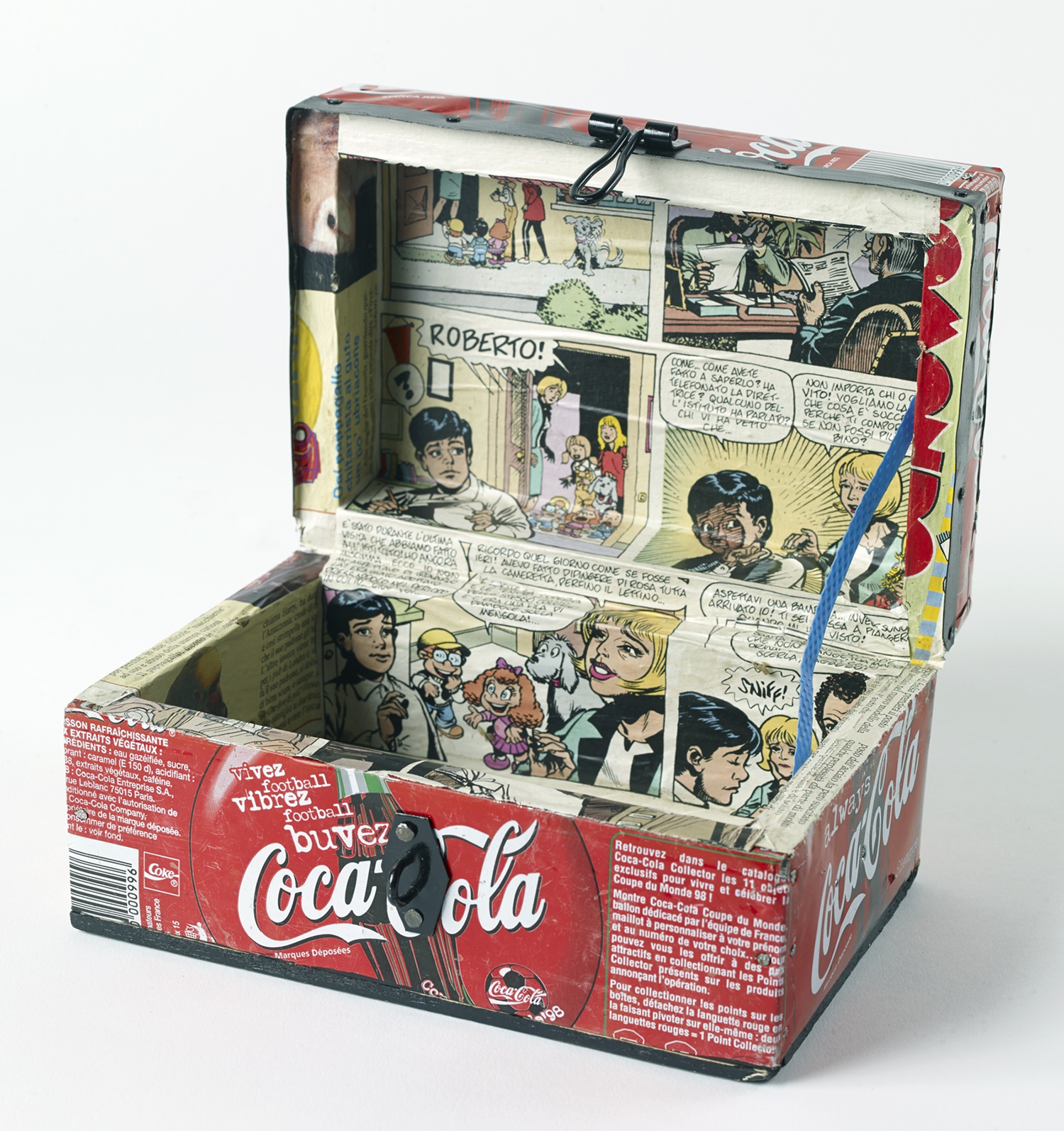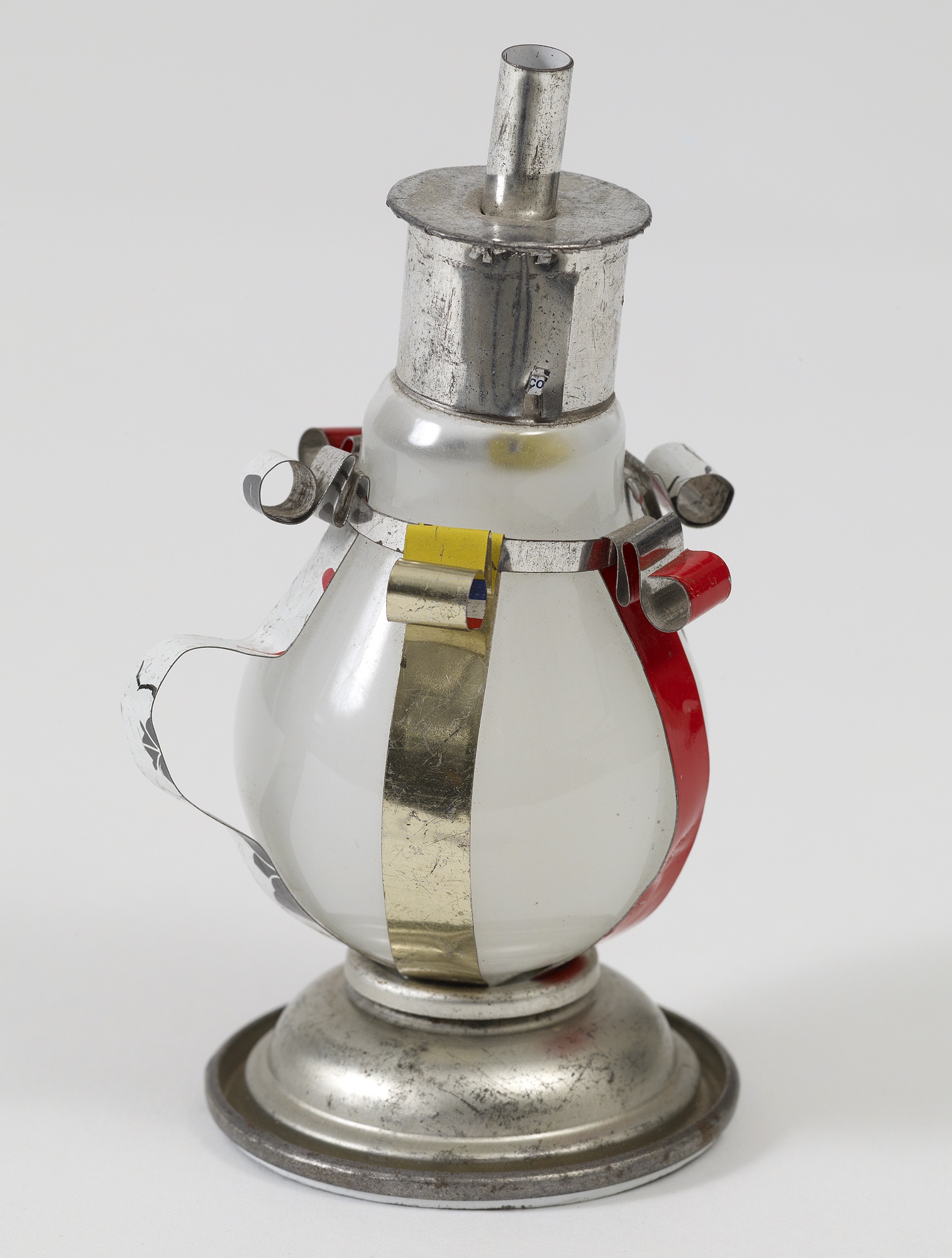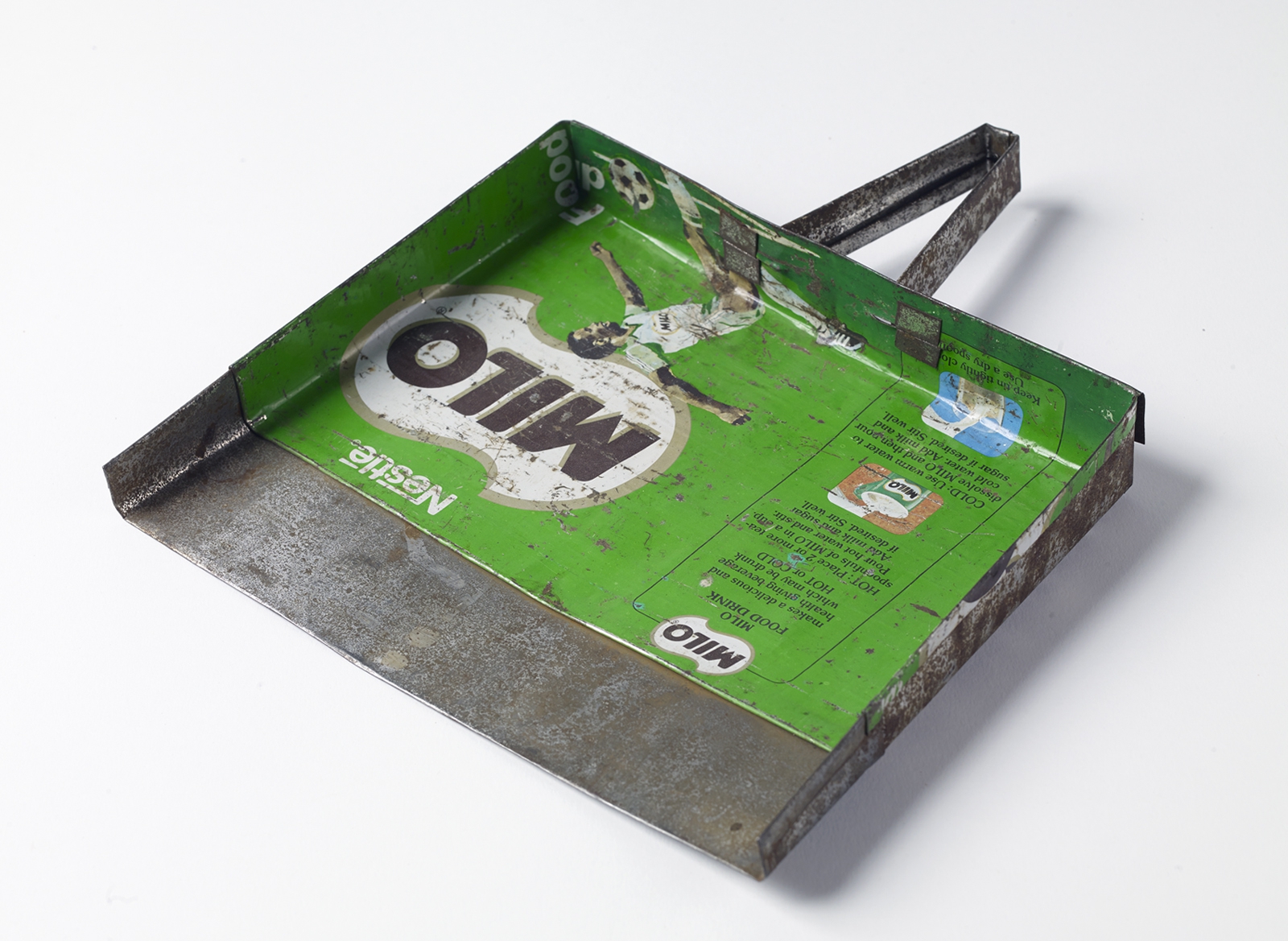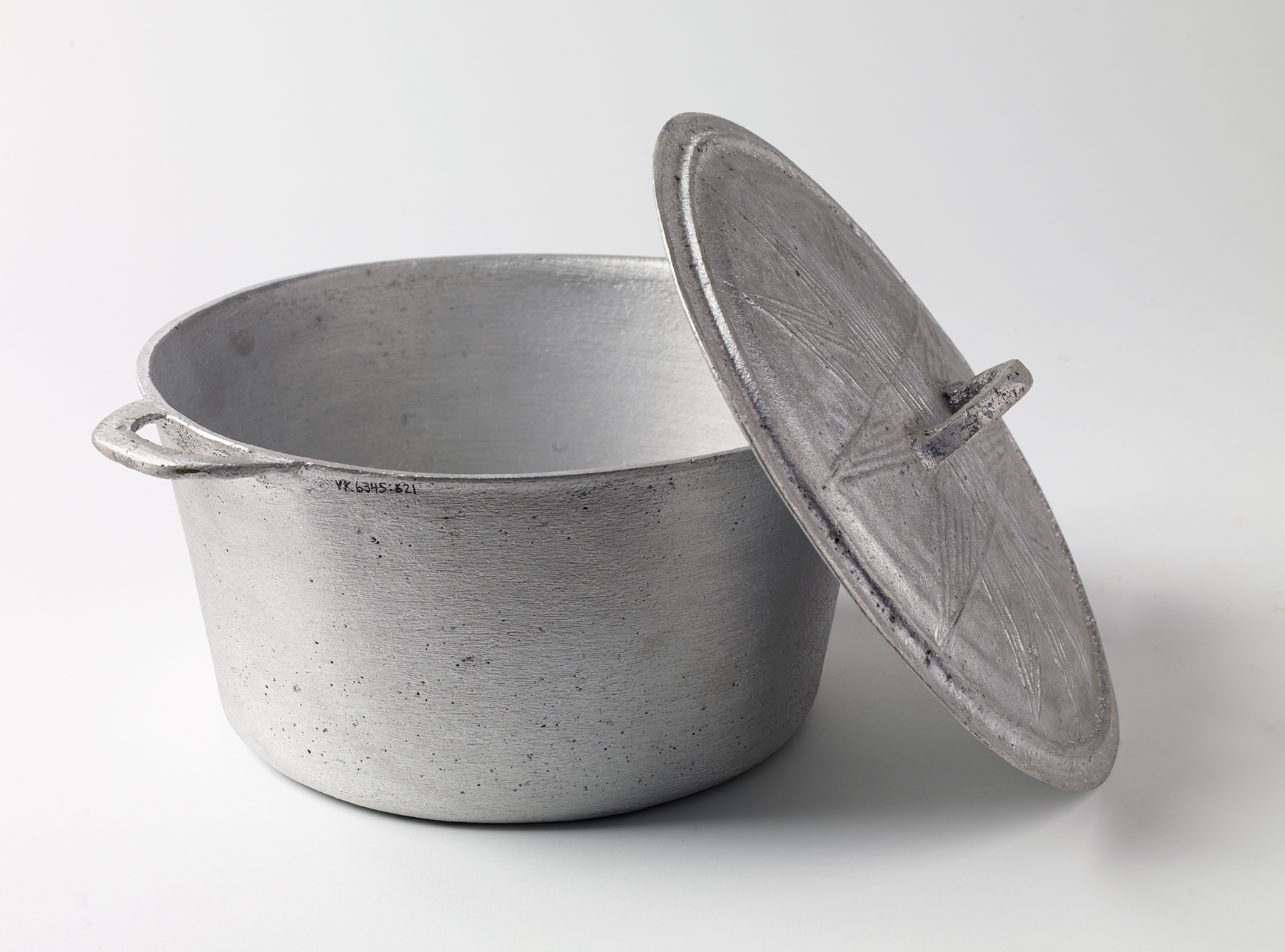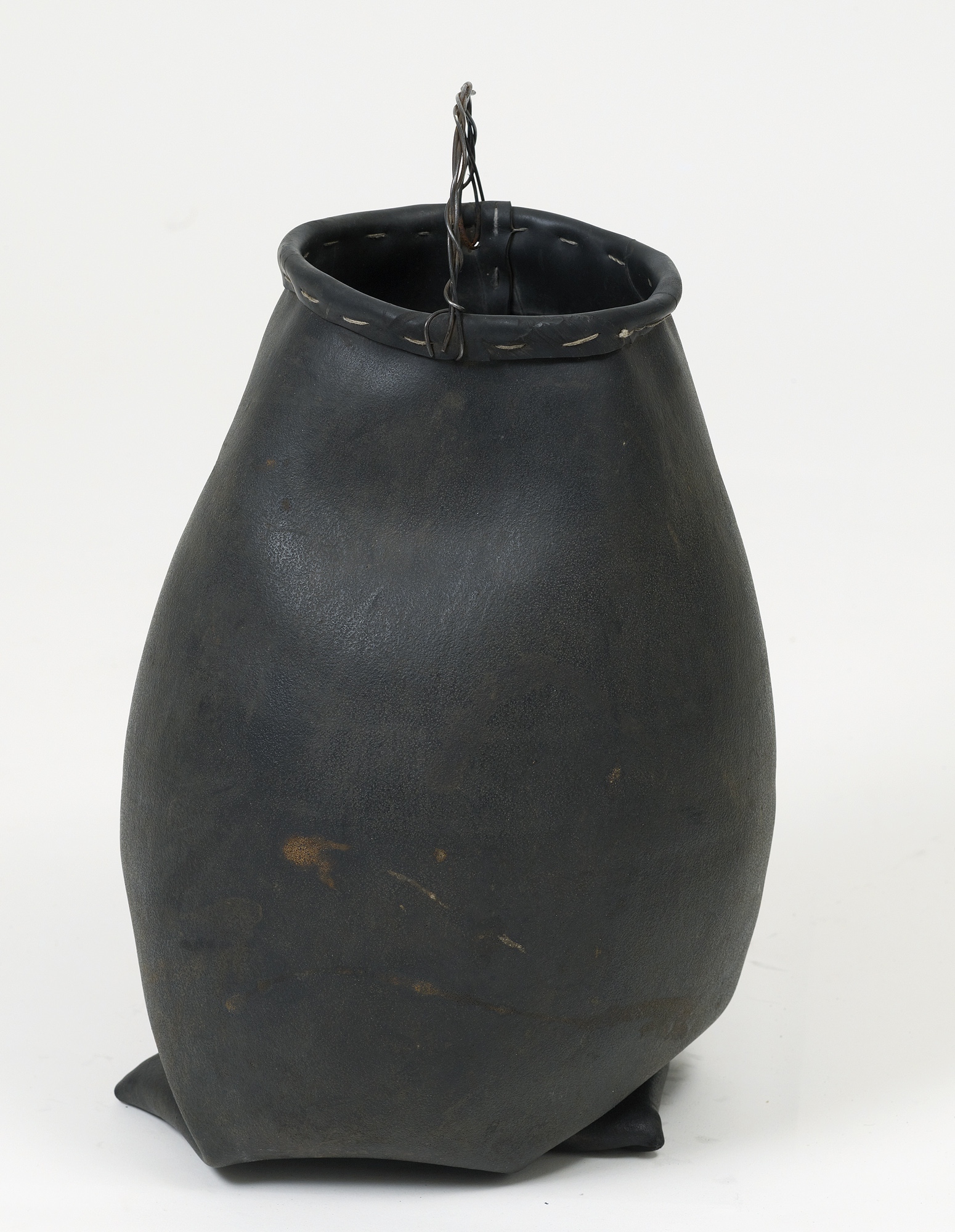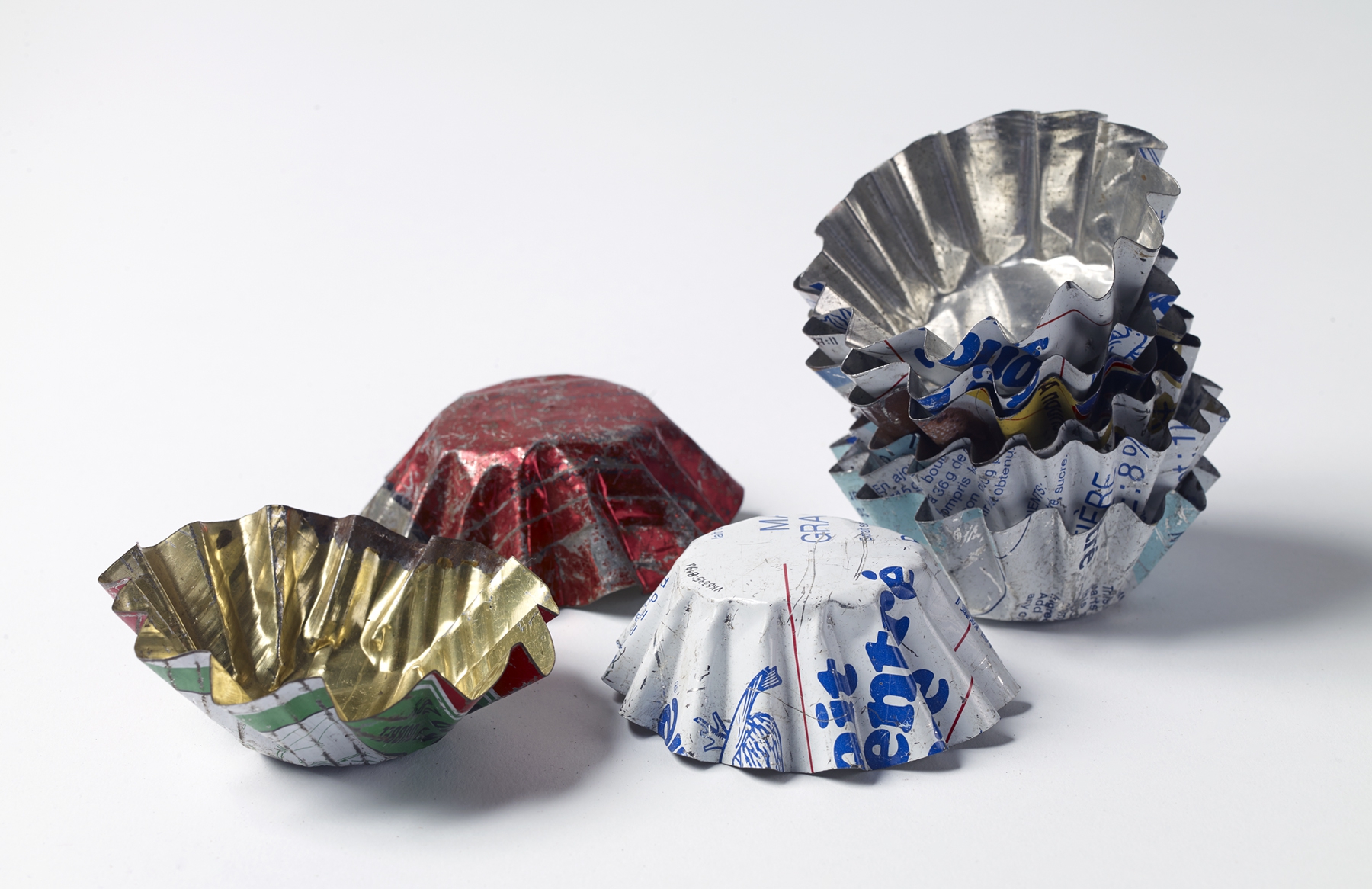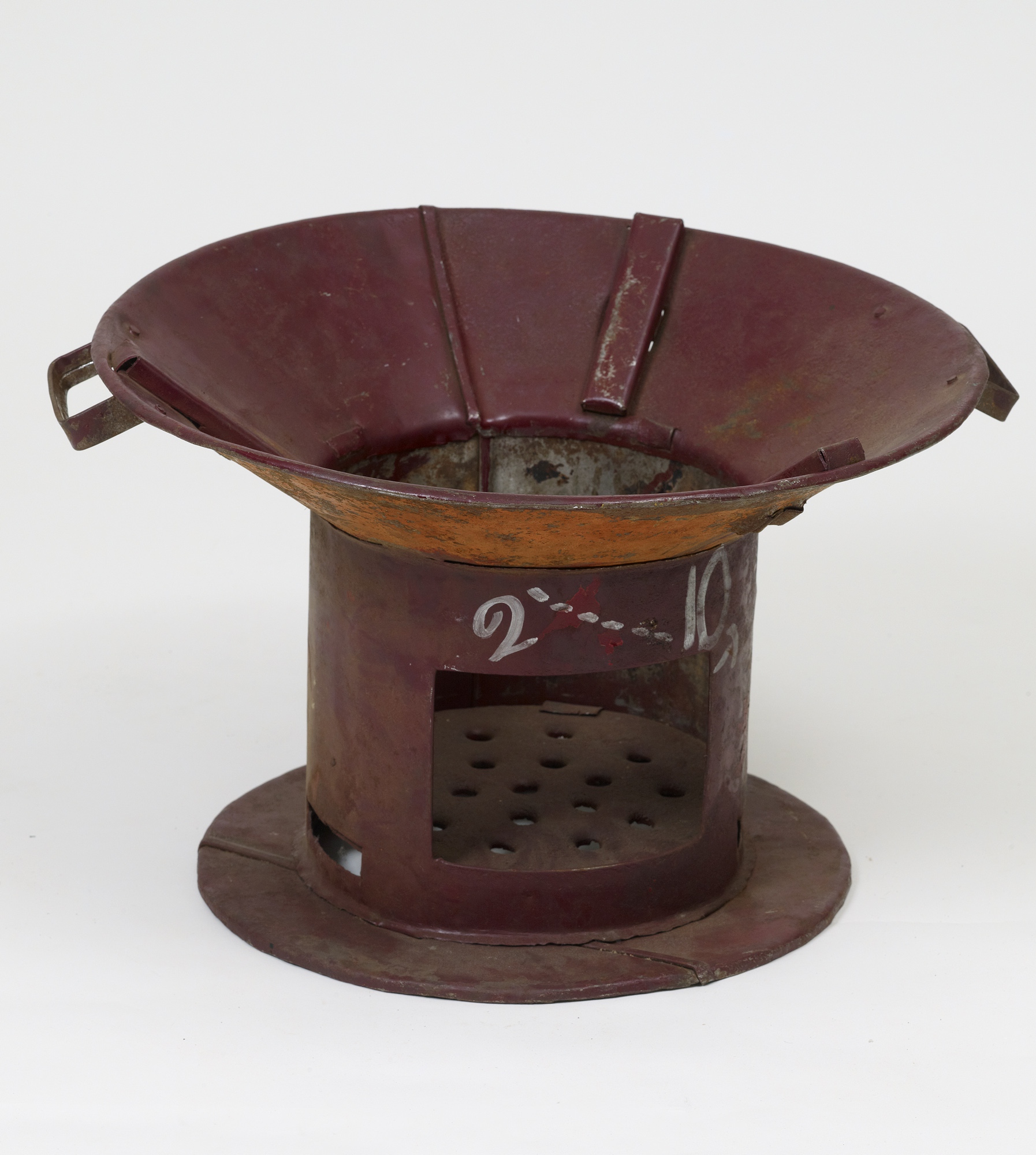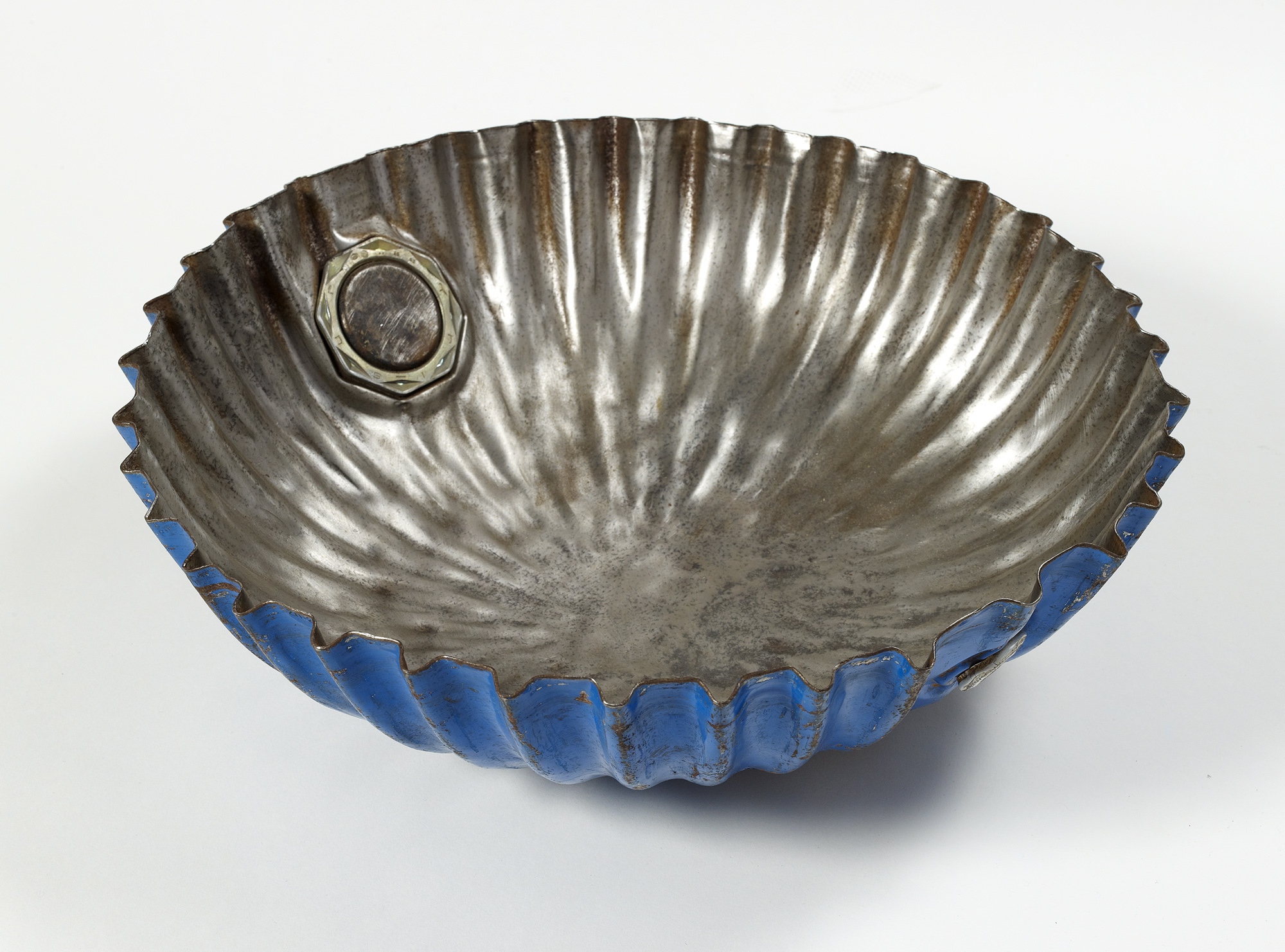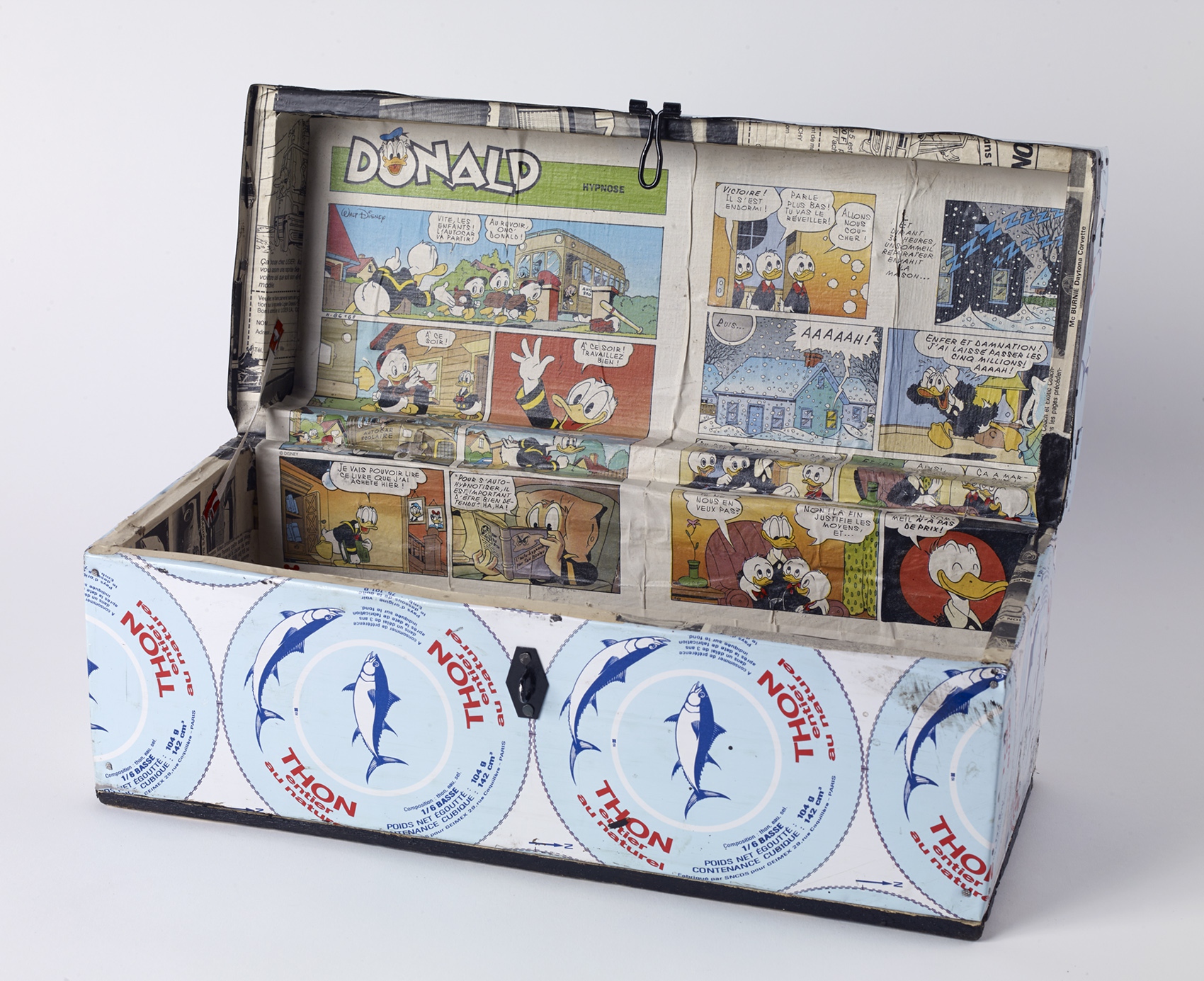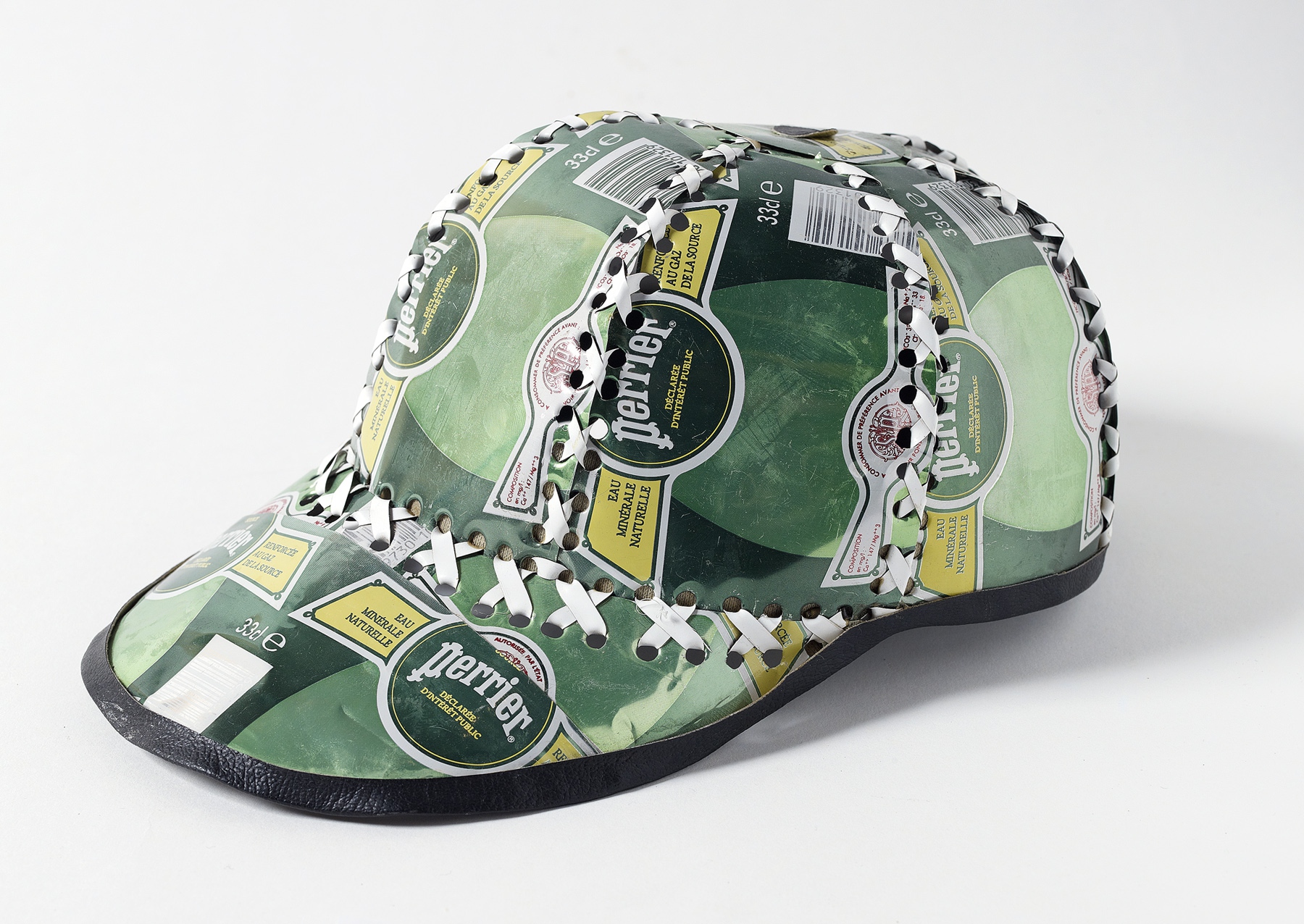Objects made of recycled materials from the collection of Eila Kivekäs
The National Museum of Finland’s ethnographic collections, known at the time as the Museum of Cultures, received a bequest of a collection of over a thousand West African objects in 2001. It had been collected by Eila Kivekäs (1931–1999), a Master of Economic Sciences who had also studied anthropology in Paris. After her commercial career, Kivekäs focused on development cooperation and, in 1989, founded the Kehitysmaayhdistys Indigo association, which operated in West Africa. From her aid trips to Mali, Guinea and Senegal, she brought products from the local cultures to Finland. Kivekäs created and produced four exhibitions on West African cultures in Pyynikinlinna, the family house of Emil Aaltonen and the Kivekäs family in Tampere: Naamion takana (Behind the mask) in 1989, Arkilla Kerka in 1991, Savi (Clay) in 1993 and Romun toinen elämä (The second life of scrap) in 1998. The exhibitions also toured elsewhere in Finland, and each was accompanied by a publication. The collection of textiles, ritual objects, clay items and recycled materials VK6345:1-1185 is also remarkable internationally.
Here, you can see objects made of recycled materials from Kivekäs’s collection, which were displayed in the last exhibition of the Museum of Cultures, Once Upon a Time in the Dark, in the Tennis Palace from 17 February 2010 to 3 February 2013. Similar items can be found in the collections from, for example, India, Tanzania and Vietnam. Created more than 10 years ago, the exhibition discussed and highlighted global energy consumption and supply, people’s survival in different living environments on nature’s terms, and technological development, for example, through lighting and vehicles. The theme is not outdated but even more topical than before.
Western, industrially manufactured consumer goods packaging and broken or discarded products have provided and will continue to provide raw materials for utility items, especially in poor non-industrialised countries. The previous application is no longer apparent when the object has been completely altered through melting, disassembly, painting or other processing. Products removed from use may be reused as such, repaired or modified, and waste materials can be turned into new items.
Select an image for more information
